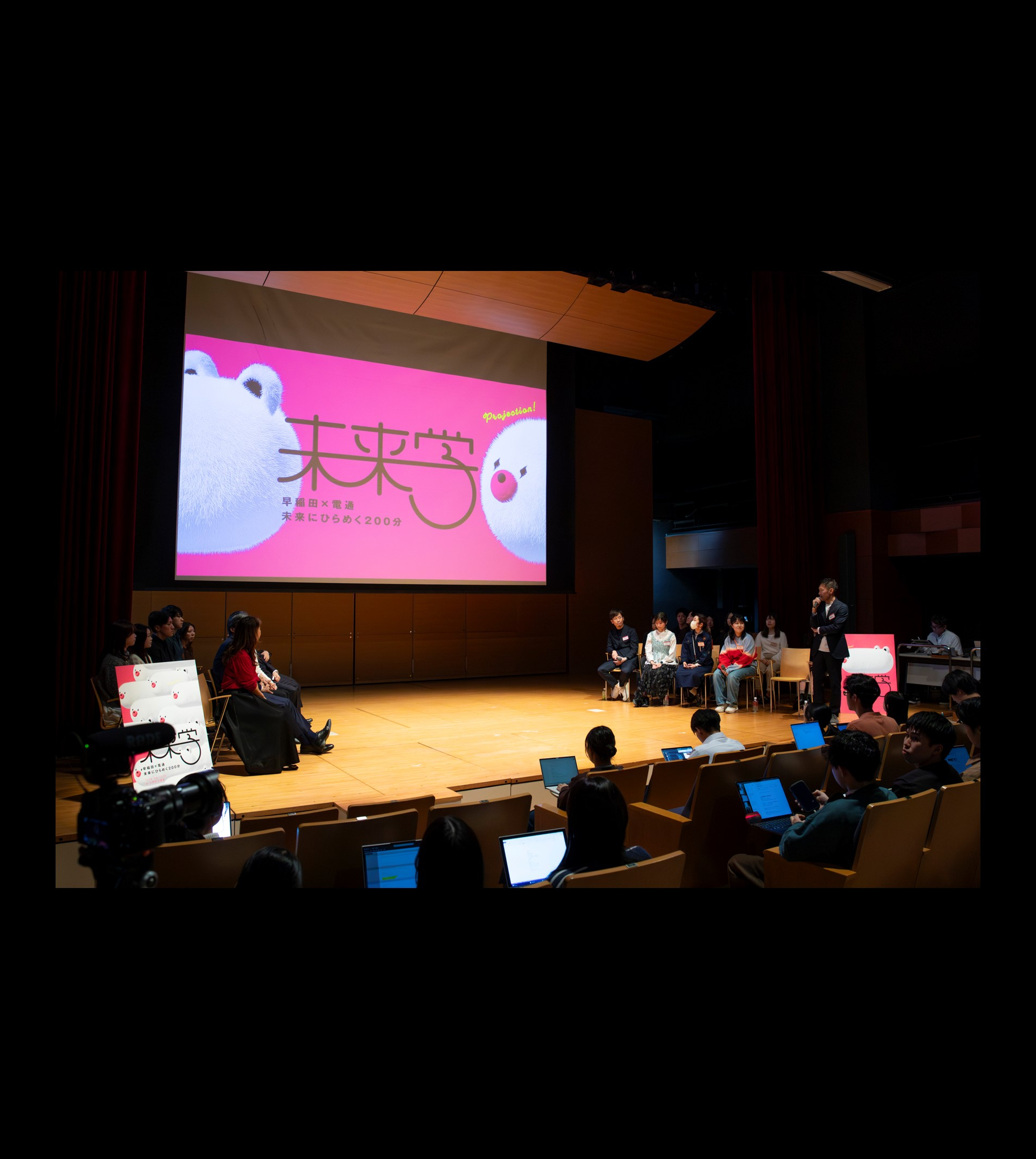- Featured Article
Dentsu x Global Management Program “Future Studies” Event Held
Wed 26 Nov 25
Wed 26 Nov 25
On October 28, 2025, the “Waseda x Dentsu Futurology – 200 Minutes to Imagine the Future” event was held at Ono Auditorium.
This event was a special joint lecture by Waseda University’s School of Commerce and Dentsu Inc. It was an interactive workshop-style event where participants learned about the creative process of the future. It was planned as part of School of Commerce’s international education program, the “Global Management Program.”
This article provides a report on the day.
*The speakers’ quotes are excerpts and summaries.


Experience an approach to future creation as part of GMP
Waseda University’s School of Commerce provides the four-year Global Management Program (GMP) with the aim of cultivating “business leaders who contribute to international society.” In addition to the graduation requirements common to all faculties, there are also completion requirements such as GMP seminars, core subjects, and English proficiency, and the program is also promoting stronger collaboration with companies through company visits and events and forums both in Japan and overseas.
Against this backdrop, the “Waseda x Dentsu Futurology – 200 minutes to envision the future” event was held as part of the GMP. Approaches to creating the future were shared with students from across the University.
This event was divided into two parts. Chapter 1, “Future Studies Input,” featured Dentsu employees active in the field explaining the thinking and process behind creating the future. Chapter 2, “Future Studies Output,” featured students experiencing the “Future Creative Session” offered by Dentsu to companies and local governments, in which they verbalized the “future they want to create.”

Original visual panels prepared for the event
Design: Natsuki Tomoda, Art Director, 4th CPR Division, Dentsu Inc.
Futurology: Putting the vision of the future you want to create into words
At the beginning of Chapter 1, Dentsu Director, Managing Executive Officer (Corporate) Makoto Soda explained the purpose of the program.
“As an ‘Integrated Growth Partner,’ Dentsu Japan supports the sustainable growth of its clients across a wide range of fields by integrating and providing diverse solutions from 140 companies. Over its 120-year history, Dentsu has honed its insights into people. We pride ourselves on having the power to move people’s hearts, envision the future, and connect people, and we are implementing a variety of projects that will pave the way for the future. We would like to share some of our knowledge and case studies with you, and by having you experience our work virtually, we hope that you will take home some hints for taking on the future of the world.”
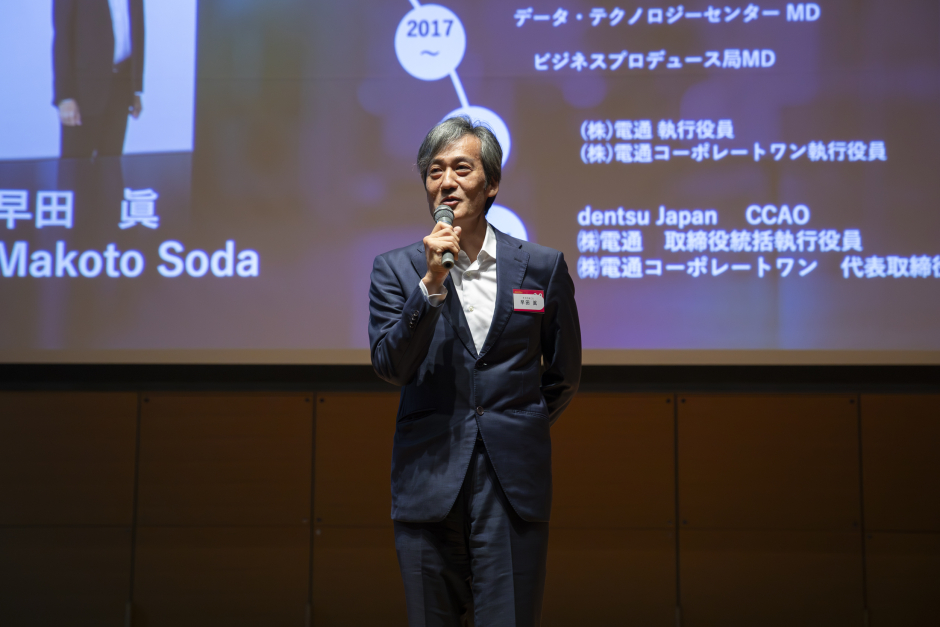
Makoto Soda, Director, Managing Executive Officer (Corporate), Dentsu Inc.
One of the speakers, Hinata Fukushima of Dentsu, a graduate of the Faculty School of Political Science and Economics, reflected on her experiences as a student and explained the process of thinking about the future.
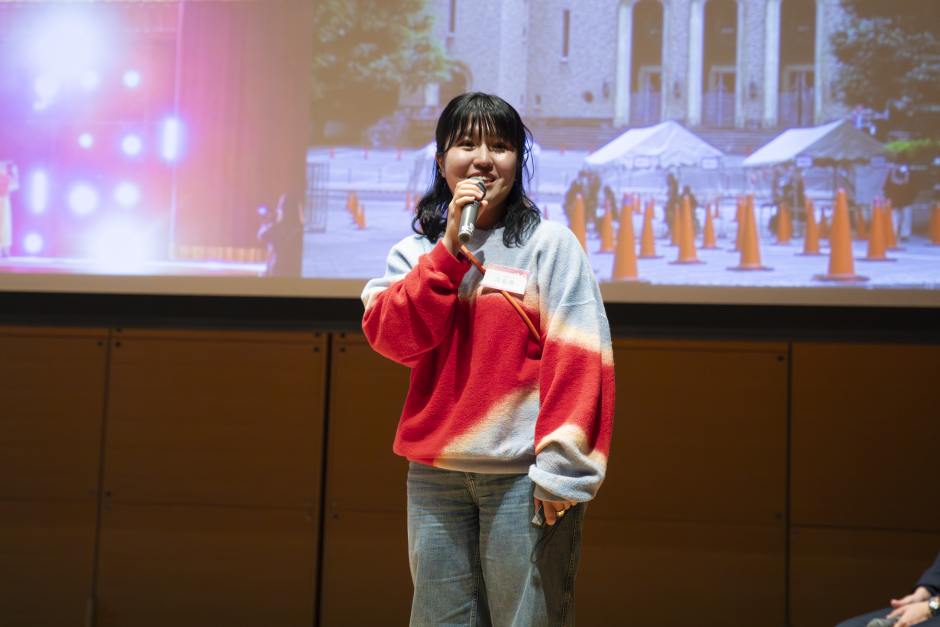
Hinata Fukushima, Copywriter/Planner, Dentsu Inc.
“During my university days, I was immersed in the organization of the Waseda Festival 2020 as its representative, but when I started job hunting, I worried about my future. There are many things you won’t know until you enter the workforce, and it’s not guaranteed that I’ll be a good fit for a company that everyone thinks is interesting. So I spoke to over 100 alumni. What motivated me was when one alumnus told me, ‘Japan is a sinking ship, so talented people should leave.’ Rather, my rebellious spirit was stirred, and I thought, ‘If that’s the case, I want to make Japan a brighter place,’ so I joined Dentsu. I have high hopes that the students of Waseda University, with its tradition of ‘enterprising spirit,’ will have the power to carve out the future.”
Kentaro Yoshida, who founded the Dentsu Future Business Creation Research Institute as the company’s chief director, explained the idea of being ‘vision-driven’ while discussing issues surrounding companies and society.
“What all great companies have in common is a vision. What that vision is can be described as the future they want to create. For example, a strong desire is born from something like, ‘I want to create a future like this, so I want to change society to XX’ or ‘I want XX to be happy, so I want to deliver the value of XX’, and this is what is realized. And when you incorporate the perspective of changing the world and the people around you, the excitement grows even more. At the heart of futurology is the process of thinking about what you need to do to achieve your vision. I would like you all to take the first step and try to put into words the future you want to create.”
In Chapter 1, various other employees from the company, including an art director and an AI master, took to the stage to share with students practical examples of future-building being carried out as part of Dentsu’s business.
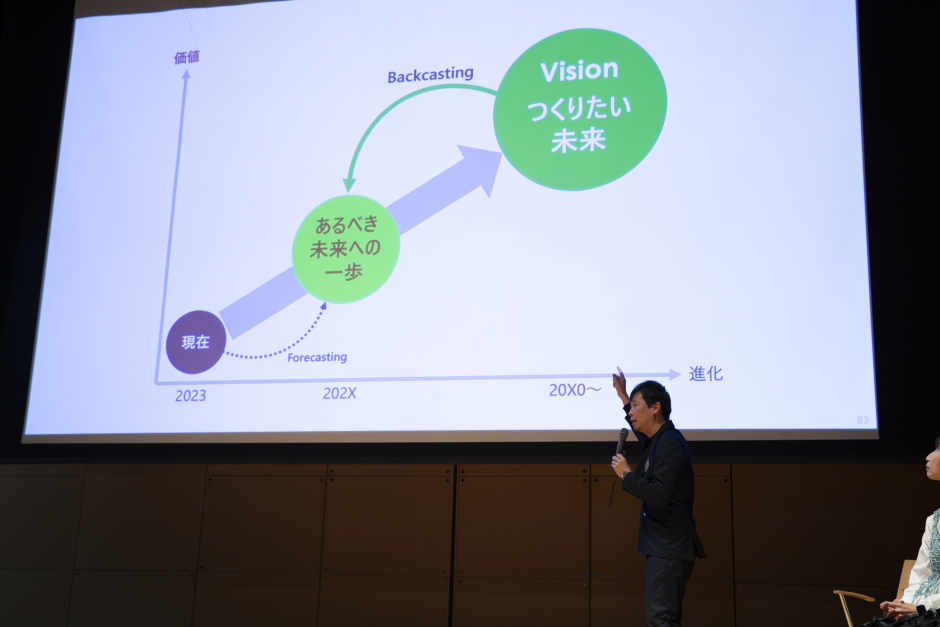
Kentaro Yoshida, Chief Director of Dentsu Inc. and Founder of Future Business Creation Research Institute
A creative session to identify social impediments and consider solutions
The “Future Creative Session” held in Chapter 2 was a unique future co-creation program provided by Dentsu. GMP students also took to the stage, and all students, including the audience, participated.

Left: Takayuki Fukushima, Creative Planner, SC Department, Dentsu Inc.
Right: Seiichi Masuhara, Managing Director of Dentsu Inc.’s Future Creative Lead Office
A Future Creation Session was held for students based on the creative process that Dentsu implements in its projects.
The facilitator was Seiichi Masuhara of the Future Creative Lead Office, who explained the key points of the Future Creative Session.
“In this Future Creative Session, we will ask everyone to come up with ideas for the future. The most important elements for this are ‘mind, technique, and body.’ It requires the gestures that create the mind and draw the future closer, the technique that turns future scenes into a story, and the space to create the body. To generate new ideas without relying on the left brain or logic, it is effective to have a sense of coming up with ideas together with the other members gathered, and to take actions such as ‘nodding,’ ‘writing down,’ and ‘encouraging.’ In the Future Creative Session, please keep in mind the image of discussing and nurturing ideas.”
Under the guidance of fellow facilitator Takayuki Fukushima, participants also shared techniques for experiencing movement, such as performing “improvisational singing and dancing,” in which they vocalized in the venue and sensed the voices of others. After an explanation of the process for generating ideas, the session then moved on to practical implementation.
The theme of the session was “What can we do to make Japan an exciting society?” First, together with the student sitting next to them, participants discussed “what are the vague feelings that we want to address?” that are preventing excitement.

Students having a discussion
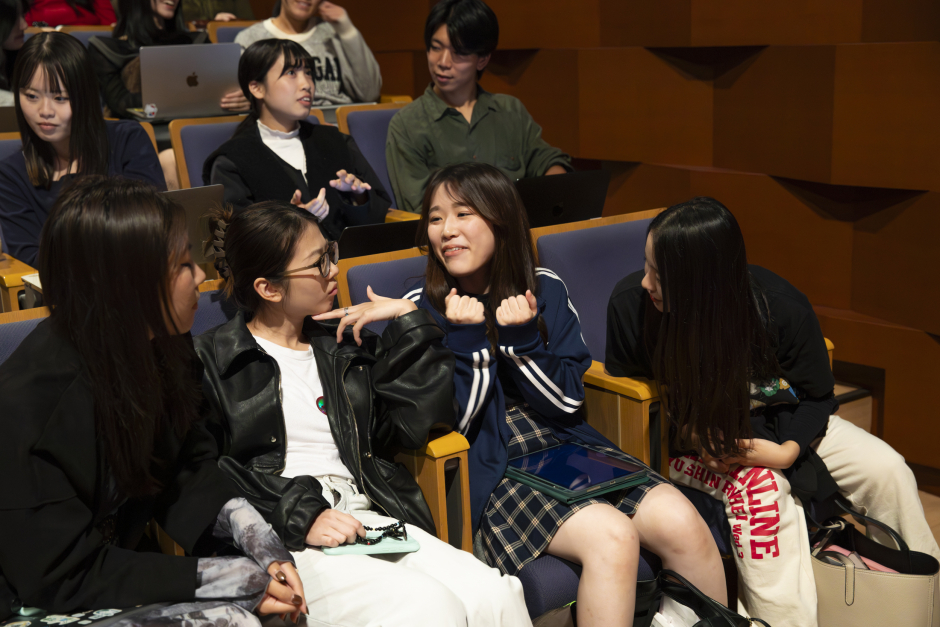
Afterwards, each participant shared their thoughts, and the answers were shared with everyone using graphics on the screen above the stage, along with illustrations.
The responses ranged from “seeking the right answer too much,” “a culture of fear of failure,” “a routine with no room for error,” “only weekends off,” “a rigid routine,” and “the fear of straying from the path.” The presenters freely spoke about the frustrations they feel on a daily basis, drawing on their own experiences.
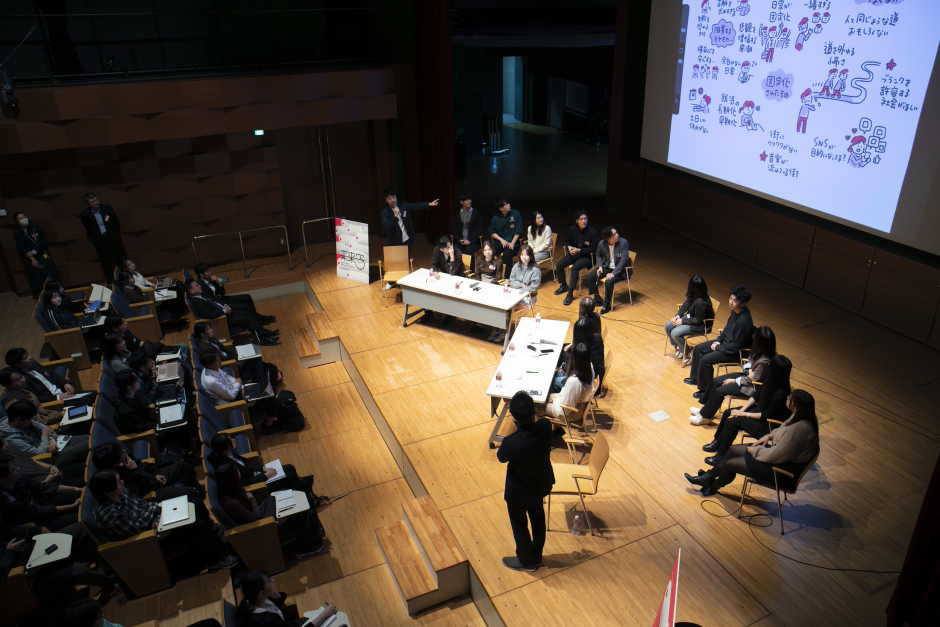
The ideas presented were illustrated in real time on the screen.
Next, the session moved to a solution-thinking session, with the theme “What kind of future landscape would we all like to see?” Participants once again considered ideas for changing “fixed things” and “assumed daily life.” Fukushima offered some advice, such as “Rather than completely changing society, take at least one symbolic action,” and “imagine the expression and situation of one person.”
Participants came up with unique ideas such as “music playing in each city,” “introducing random elements to life,” “vehicles with themes such as ‘dancing ‘ and ‘sleeping ‘,” “subscriptions for the city you live in,” and “two years extra after high school to think about what you want to do.”
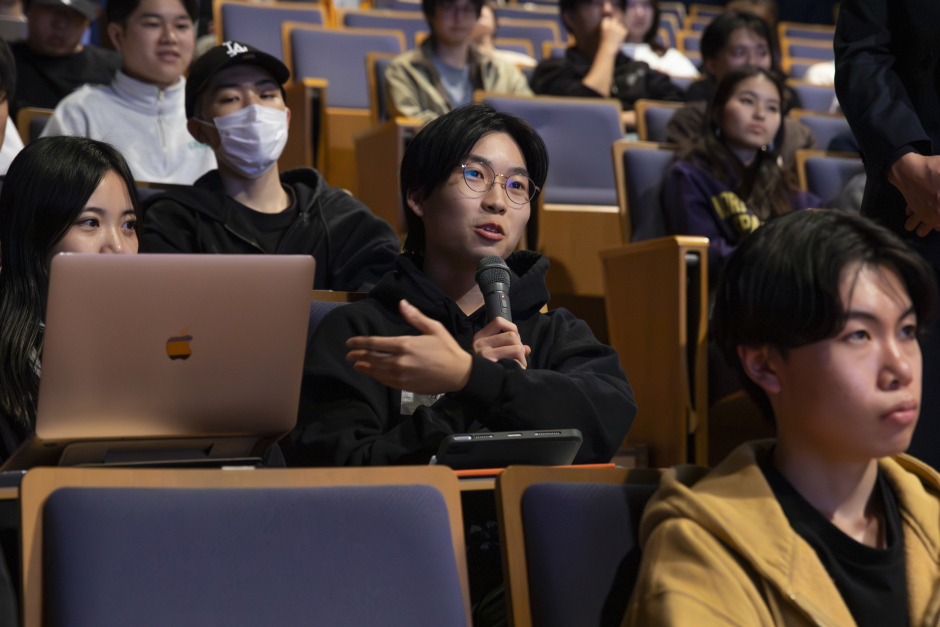
Participating students presenting their ideas

Masuhara delivered a message to the participating students who had created diverse future landscapes.
“We may be moving from an era of looking back at the past to an era of creating something for the future. As students today, you will be the ones who will create excitement in society. The people who will be able to achieve results at that time will be those who have strong initial aspirations. As a university student, reflecting on your own thoughts and raising your aspirations now will surely lead to success in the future.”
At the end of the event, attendees made a “Declaration of Commitment to the Future.”
To create an exciting future, we used generative AI to visualize our own imagination of what our future will be like, based on a photo of ourselves. We set it up so that it would look like we were wearing a polar bear costume, which was also the key visual for this event.
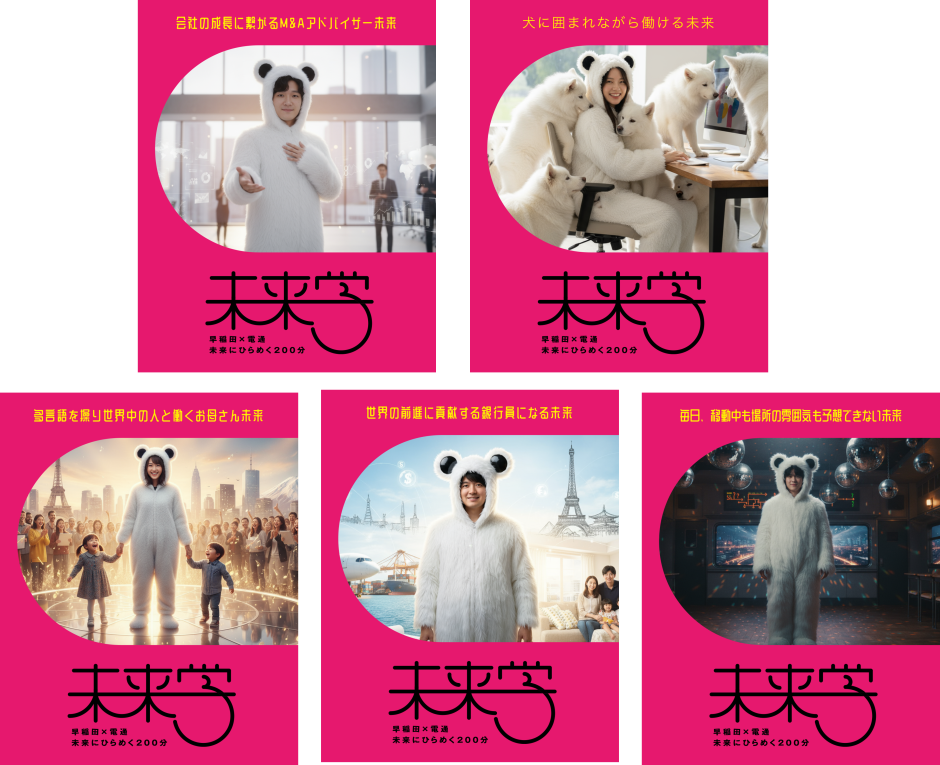
Actual images created by students
The 200-minute event came to a close, with Professor Satoshi Nakaide of the Faculty of Commerce, Director of GMP, giving his final thoughts.
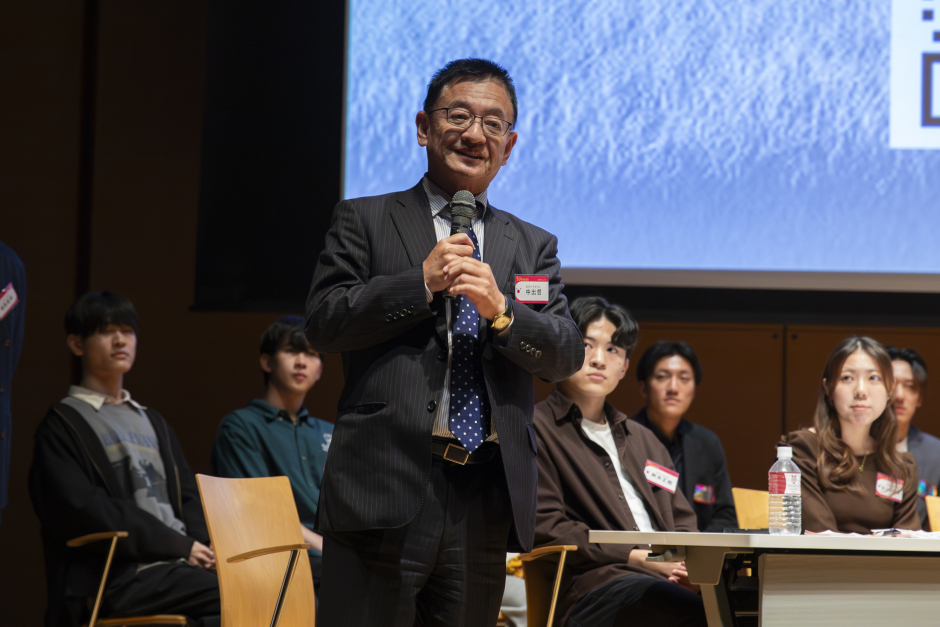
Professor Satoshi Nakaide, Faculty of Commerce
“I myself participated in the event thinking about my excitement and frustrations, but I felt that it was ultimately my own mind that was holding me back. This opportunity to co-create together while listening to the opinions of students was also a valuable educational opportunity. I would like to continue to pool our strengths to create new values and strengthen our efforts to communicate them to society.”
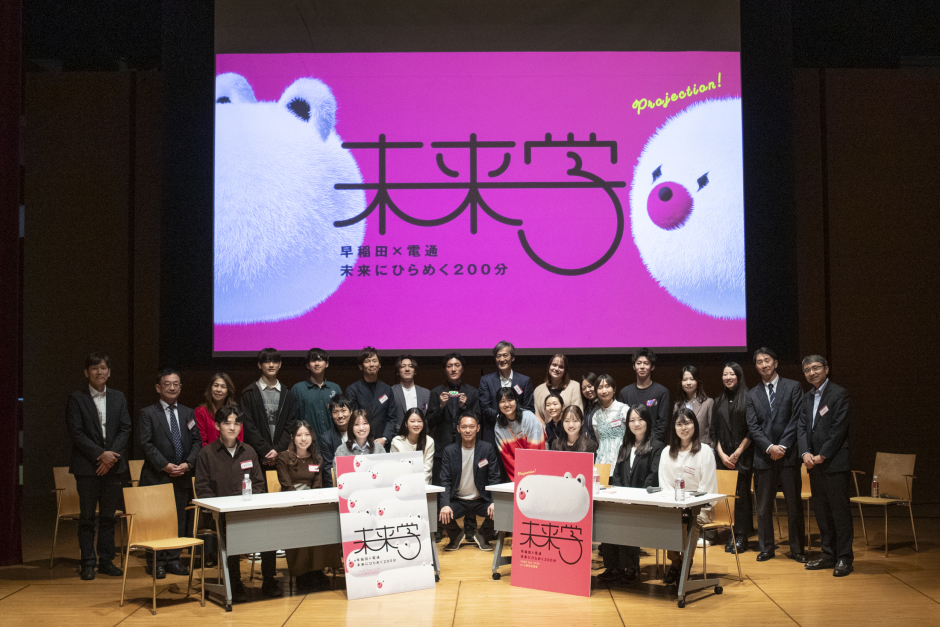
Photo taken at Ono Auditorium on the Waseda Campus

